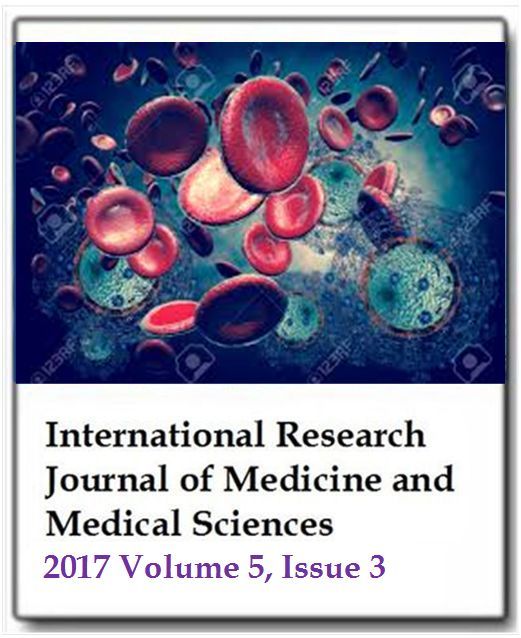Antiepileptic drugs use among patients attending epilepsy clinic at Jimma university teaching and referral hospital, southwest Ethiopia: Retrospective facility based cross-sectional descriptive study
Walelign Atalay, Chernet Abebe and Waju Beyene SalgedoInternational Research Journal of Medicine and Medical Sciences
Published: July 27 2017
Volume 5, Issue 3
Pages 37-43
Abstract
Antiepileptic drugs (AEDs) are primary therapeutic mode for epilepsy. Nevertheless, the risks of significant adverse effects and drug interaction increase when more than one drug is used. A retrospective cross-sectional facility based study was carried out in Jimma university specialized teaching hospital, southwest Ethiopia, from June 25 to July 5, 2015. The sample size was determined by Joint Commission on the Accreditation of Health Care Organization (JCAHO) criteria by taking 5% of the total patient medical cards through systematic random sampling technique. Data were collected by trained data collectors using the pre-developed data collection format. It was entered onto computer and analyzed by SPSS 20.0 for window and the result was presented in tables and descriptive narrations. A total of 154 patients’ treatment cards which contains AEDs were studied. 95 (61.7%) of the subjects were males and majority, 74 (48%), were in the age group of 5 to 18 years old. Generalized tonic-clonic seizure (76.3%) was the most common type of epileptic seizure seen. Monotherapy (89.7%) was most frequently used. Headache (64.4%) was the commonest adverse effect complained by the patients. Almost eighty percent (79.20%) of AED use was in accordance with indications while 20.8% were difficult to conclude whether it is correct or incorrect indications since the type of epilepsy is not specified. There was 17.7% under dose, 8.4% over dose and 21.1% AED use. There were potential drug-drug interactions in 9.4%. The present study has revealed prudent use of AEDs pertaining to indications and contraindications. The classification of seizure, use of drugs with potential drug interaction, dose and duration experiences need urgent intervention of giving health education to patients to report to physicians on follow-up days.
Keywords: Drug use evaluation, epilepsy, antiepileptic drugs, drug utilization.
Full Text PDF
